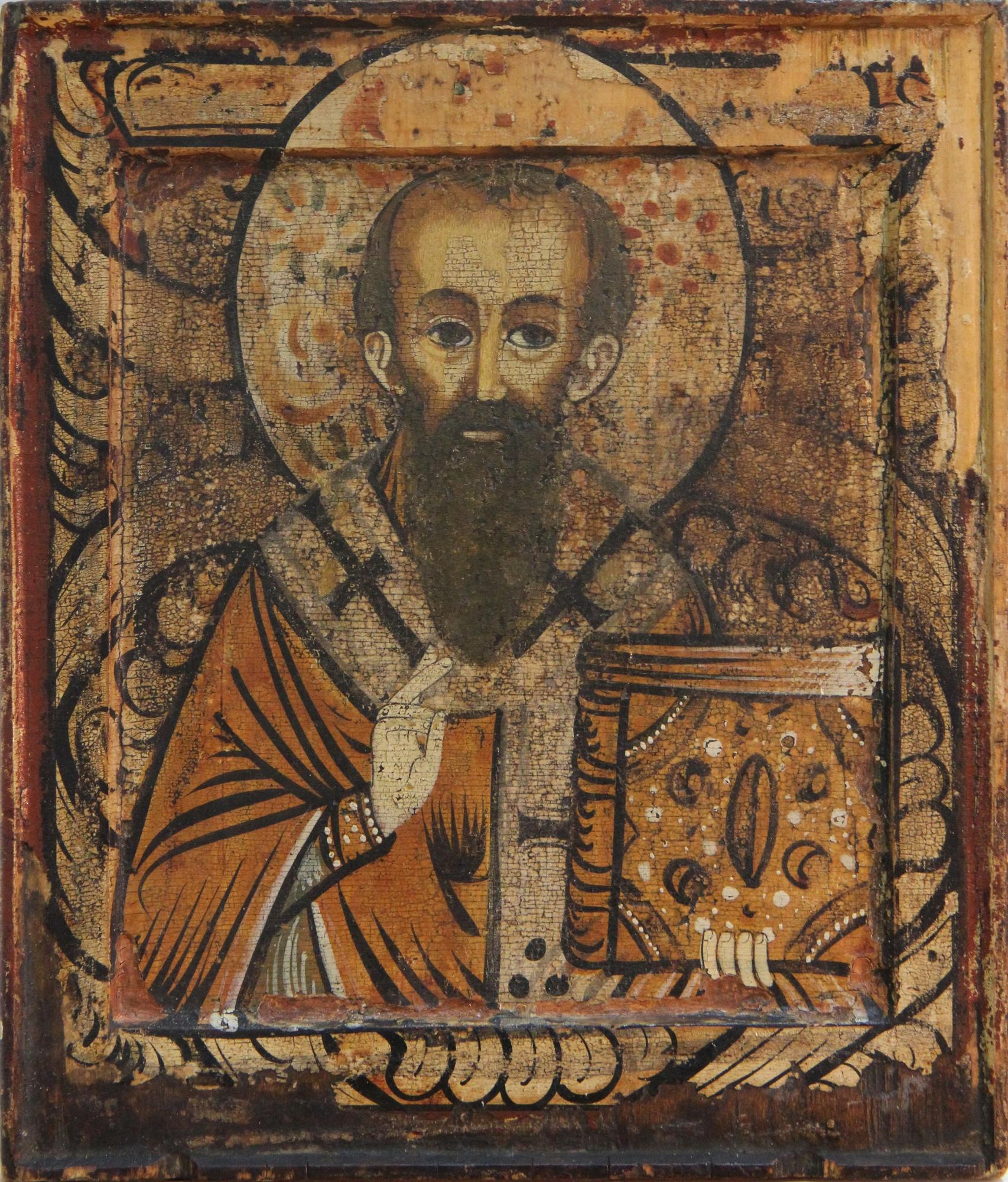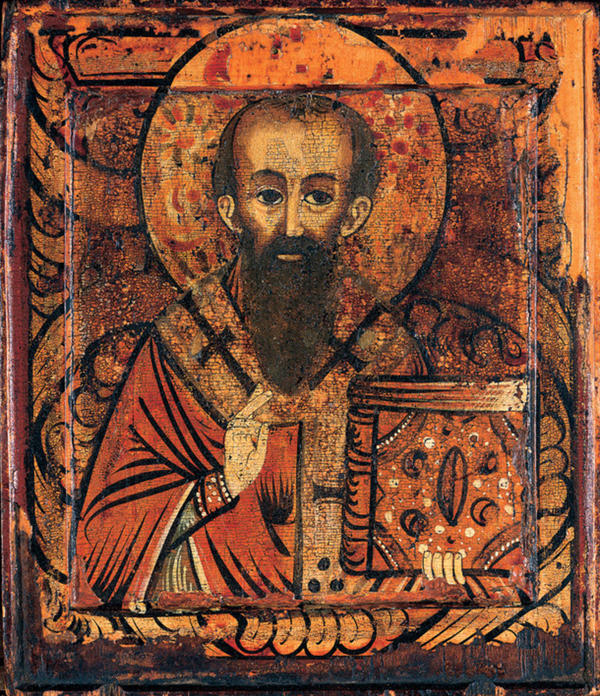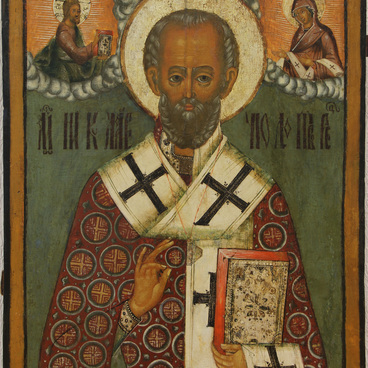St. Antipas lived in the 1st century and was a disciple of St. John the Evangelist. At the time of the rule of Emperor Nero, Antipas became a Bishop of Pergamon in Asia Minor. As punishment for his preaching Christianity, he was burned in a bronze bull-shaped altar on an open fire in the temple of Artemis. As the legend goes, when Antipas’ followers opened the torture device, they found the body of their teacher untouched by fire.
The earliest image of St. Antipas is believed to be an icon painted at the Sinai Monastery in Jerusalem in the 13th century. In that icon the Bishop is depicted chest-high, with a grey beard and The Gospels. Over the following centuries, several iconographic subjects appeared: St. Antipas is painted either in a burning bull, or on the King’s throne.
The earliest image of St. Antipas is believed to be an icon painted at the Sinai Monastery in Jerusalem in the 13th century. In that icon the Bishop is depicted chest-high, with a grey beard and The Gospels. Over the following centuries, several iconographic subjects appeared: St. Antipas is painted either in a burning bull, or on the King’s throne.



